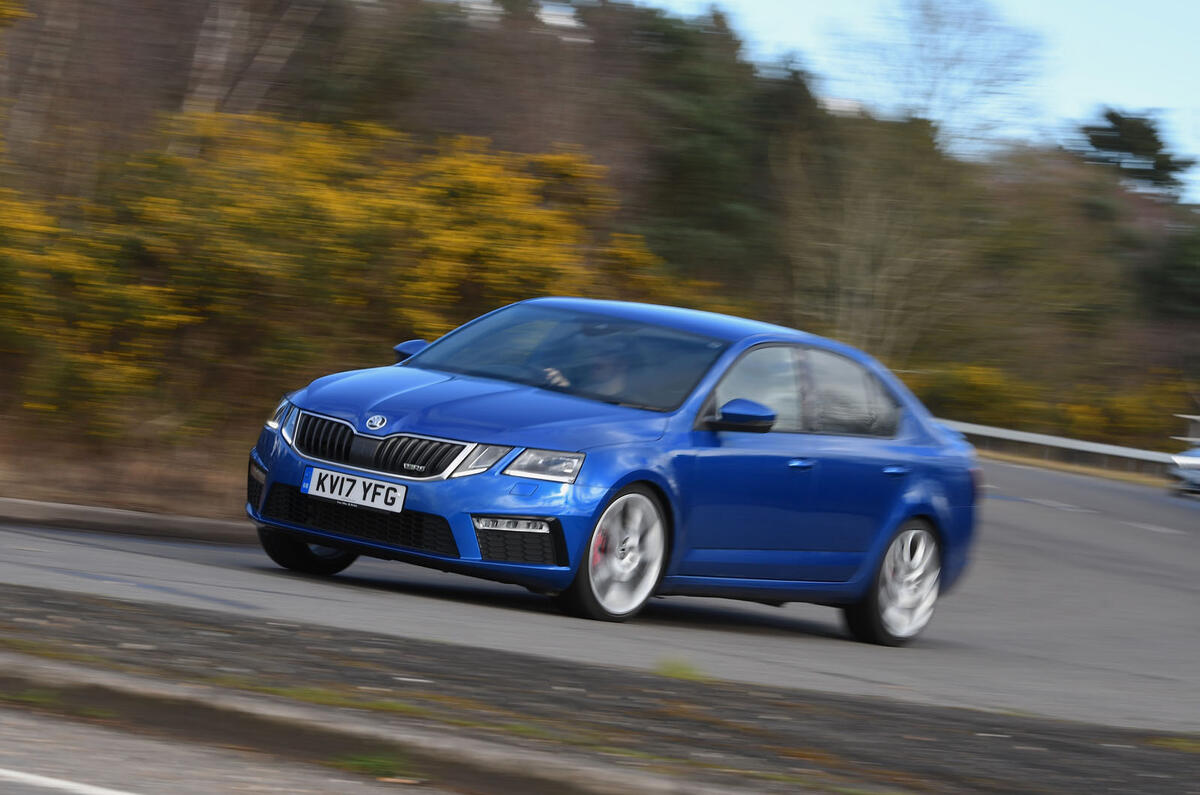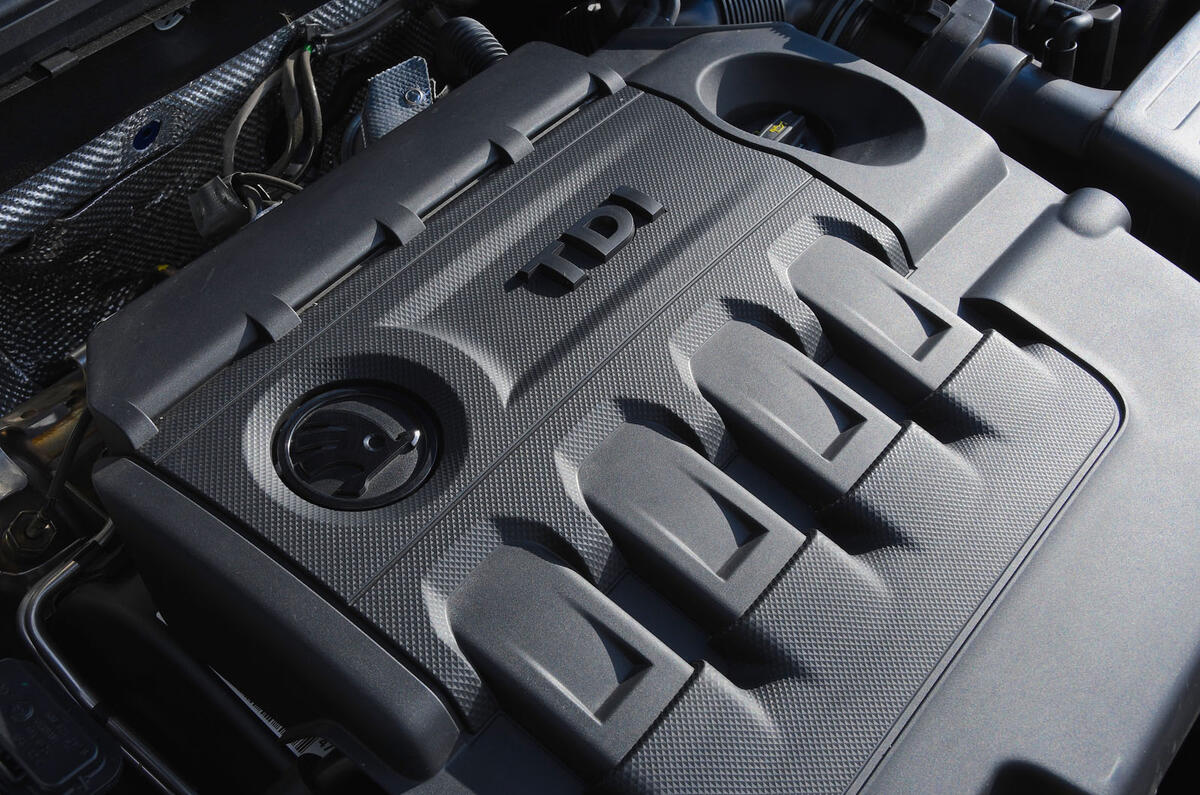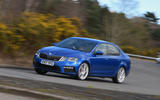Why we’re running it: It’s the first in a two-parter: diesel vRS for three months, petrol vRS for three months. Which makes the better buy?
Month 4 - Month 3 - Month 2 - Month 1 - Specs & prices

Life with a Skoda Octavia vRS: Month 4
Our fast Czech estate holds its own in some exalted company - 29th August 2018
I don’t have a dog or any children, my wardrobe removal business is yet to get off the ground and you’re more likely to see me swim the Channel in a tutu than voluntarily undertake any DIY task.
Basically, I don’t have much need for an estate car. Yet on a couple of occasions recently, I’ve found myself putting the vRS’s spacious rear seats and enormous boot to good use.
The first occasion was an early morning dash from home in Bristol to Bicester Heritage with three car-mad friends. We were going to the Luftgekühlt event – a gathering of air-cooled Porsches, basically – and the weather was grim. With the boot full of walking boots, jackets, umbrellas and dry clothes, the four of us piled into the car.
Ben, in the front seat, thought the Skoda’s petrol engine sounded a bit like a diesel under half throttle openings and he wasn’t too impressed by the quality of materials inside the cabin, although he was so amazed by the Octavia’s traction away from slippery roundabouts he was convinced it had four-wheel drive.
Riding in the back, meanwhile, was Adam, who said the ride was too firm for him to nod off (how my heart bled) and Ross, who was surprised at how much more leg room the Skoda offered than his BMW 3 Series estate.
It’s enlightening to get a second, third or fourth opinion of a car you drive every day and it’s interesting to hear what other people pick up on. For what it’s worth, I thought the Octavia was in its element on that journey, although as we splashed away from Bicester Heritage after a day of Porsche indulgence I wished I was driving a 964RS rather than an Octavia vRS.

The second occasion was Autocar’s Britain’s Best Affordable Driver’s Car shoot-out. No, the Octavia wasn’t in the contest, but it was being put to work as a support car. That meant it was loaded up with cases, bags, cleaning equipment and whatever else photographers and videographers need to do their jobs, while at other times it was used as a video tracking car. It didn’t miss a beat, although to be frank I’d have been alarmed if any of that had been troublesome.









































































Join the debate
Add your comment
NEED FEEDBACK
This car and sibblings with other badges use the MQB platform. Well a friend in he sates is flogging his A6 because getting out of the car is unpleasantly painful. I didnt think about this till the wife bought her new Octavia and I too must say the getting out is not naturally comfortable. Its too low somehow. Anyone else noticed this issue??? Testers never mention this, maybe they are just contortionists
Here’s another great way to
Here’s another great way to improve running costs - when you can, leave the car at home. Incredible how economical it is then.
Of course, I am aware that this advice is normally met by comments such as ‘oh really? Well I live at the end of a 30 mile single track road’ or ‘do you expect my 86 year old wheelchair using mum to walk?!!’ but the fact is that a huge proportion of car journeys are 2 miles or less.
Once in a while, leave more time and walk or cycle. Then enjoy your petrol motor when you do drive.
Basis of statements
Are the stated feul consumption figures based on the pump or the computer? In my experience, they can be different.